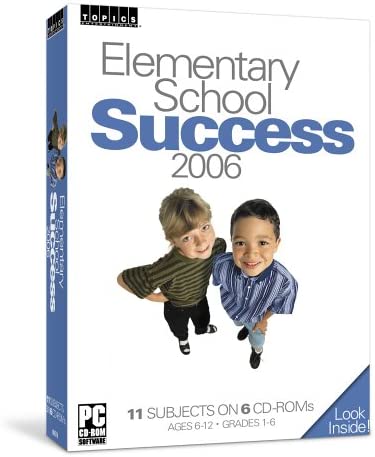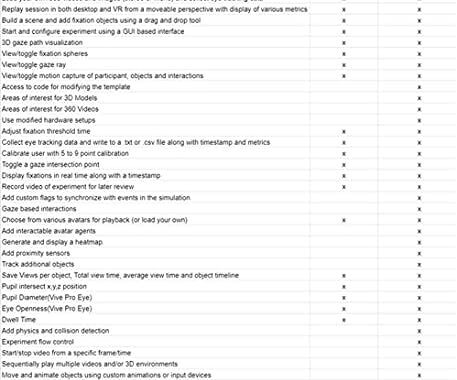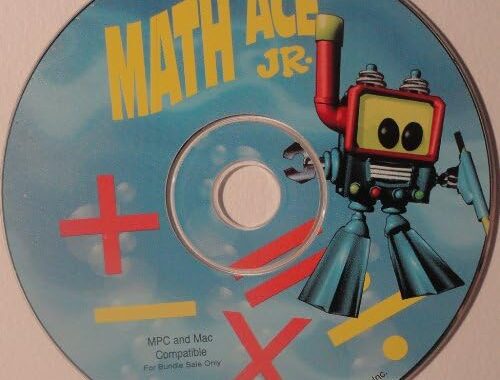Elementary School Success Standard 2006 Review: The Ultimate Solution for Elevating Your Child’s School Results

Introduction
Elementary school can be a challenging period for both children and parents. With the numerous academic demands and social pressures, many students find themselves struggling to keep up. But with the Elementary School Success Standard 2006, parents can now provide their children with the ultimate solution for better school results. This resourceful guide is designed to aid children in areas such as reading, writing, mathematics, science, social studies, and many more.
Content Overview
The Elementary School Success Standard 2006 guide provides a step-by-step approach to learning, delivering a well-established method for easing your child into academic success. The guide comes with 205 pages of practical tips and strategies for parents to utilize at every stage of their children’s education. Every chapter offers a unique insight into the essential aspects of academic success, such as setting realistic goals, effective study habits, and cooperative learning.
Chapter 1. Preparing Your Child for Elementary School
The first chapter of the Elementary School Success Standard 2006 guide discusses the best ways parents can prepare their children for elementary school. It highlights the importance of building a solid foundation before your child commences school. Through this chapter, parents can learn how to shape their child’s attitudes while also fostering a love for learning from an early age.
Chapter 2. Building Effective Study Habits
One crucial factor that affects a child’s success in elementary school is their study habits. Chapter 2 focuses on developing effective study habits, including learning how to read, making use of vocabulary, writing compositions, and more. It provides parents with the tools they need to help their children gain a sense of independence and responsibility for their education.
Chapter 3. Reading Strategies for Success
Reading is a key aspect of a child’s academic success, and the Elementary School Success Standard 2006 guide provides useful strategies for helping kids develop effective reading habits. Chapter 3 explains the fundamental principles of reading, such as phonics, decoding, comprehension, and fluency. The chapter also highlights the different types of reading materials that aid in children’s growth, from picture books to chapter books.
Chapter 4. Writing Strategies for Success
Writing is another essential aspect of a child’s academic journey, and the guide offers practical tips for mastering this skill. Chapter 4 provides step-by-step guidance on how to develop proper writing techniques, such as planning and organizing thoughts, using proper grammar, punctuation, and spelling.
Chapter 5. Mathematics Strategies for Success
Mathematics is an integral part of elementary education and beyond, and the guide covers it comprehensively. Chapter 5 focuses on developing effective math skills, from learning numbers and basic operations to more complex concepts like fractions, measurements, and geometry.
Chapter 6. Science Strategies for Success
The Elementary School Success Standard 2006 guide also provides parents with strategies for successful science education. Chapter 6 covers the fundamental scientific principles that children require for success, including scientific observation, experimentation, and inquiry. This chapter makes science more approachable, and parents can help kids gain an appreciation for the subject.
Chapter 7. Social Studies Strategies for Success
Social studies is an integral component of elementary education, and the Elementary School Success Standard 2006 guide provides an in-depth analysis of this subject. Chapter 7 covers various social studies disciplines, including history, geography, government, and economics. This chapter provides parents with a clear understanding of the content to introduce to their children to build their knowledge.
Chapter 8. Arts and Music Strategies for Success
The Elementary School Success Standard 2006 guide is comprehensive, covering various subjects important to your child’s academic success. Chapter 8 focuses on arts and music education, which is crucial for developing creativity, critical thinking, and self-expression. This chapter offers practical guidance on how parents can introduce their children to the various forms of art and music.
Chapter 9. Special Education Strategies for Success
Every child learns differently, and the Elementary School Success Standard 2006 guide acknowledges this. Chapter 9 provides practical advice on how parents can support their children overcome learning disabilities to achieve academic success. It covers various disability types, including dyslexia, ADHD, autism, and many more.
Conclusion
The Elementary School Success Standard 2006 guide offers an effective solution for parents seeking to improve their child’s academic performance. With guidance from this guide, parents can create a conducive academic environment for their children and help them attain academic success. The content provided in the guide is comprehensive, detailed, and user-friendly, making it an essential resource for parents seeking to support their children in achieving their academic potential.

![Amazon.com: Band-in-a-Box 2019 Pro for Mac [Old Version]](https://www.coupondealsone.com/wp-content/uploads/2024/04/2O6e4Cw25Z6a.jpg) Band in a Box 2019 Flash Drive Review
Band in a Box 2019 Flash Drive Review  WorldViz SightLab Tracking Software Omnicept Review
WorldViz SightLab Tracking Software Omnicept Review  Math ACE Jr. Review: A Must-Have Learning Tool for Kids Ages 4-8
Math ACE Jr. Review: A Must-Have Learning Tool for Kids Ages 4-8  Review of Image Line Software Studio Signature Bundle
Review of Image Line Software Studio Signature Bundle  FileMaker Pro Advanced Review
FileMaker Pro Advanced Review ![Amazon.com: Punch! ViaCAD 2D/3D v12- For Mac [Mac Download] : Software](https://www.coupondealsone.com/wp-content/uploads/2024/04/YBusi9QdX6E2.jpg) ViaCAD v12 for Mac Review
ViaCAD v12 for Mac Review  Elevate Your Baking with the Stylish and Powerful Drew Barrymore 5.3-Quart Stand Mixer
Elevate Your Baking with the Stylish and Powerful Drew Barrymore 5.3-Quart Stand Mixer  Review of the Sterilizer Charging Wireless Certified Sanitizer
Review of the Sterilizer Charging Wireless Certified Sanitizer  DESTEK VR Controller Review
DESTEK VR Controller Review